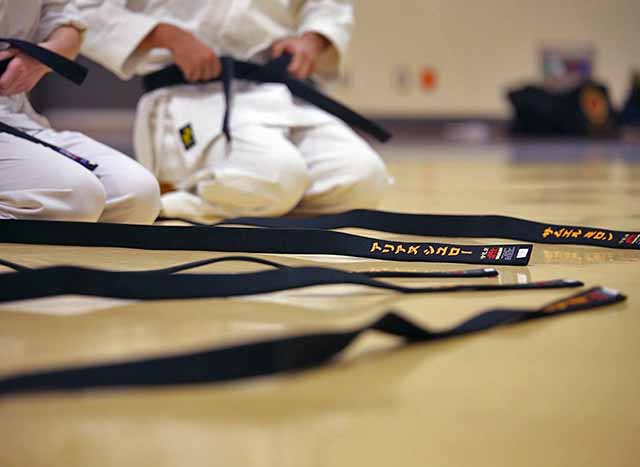Martial arts have something mystic and mysterious about them that has long been captivating the hearts and minds of people worldwide. Whether it’s the rich history, the diverse styles, or the profound physical and mental benefits, one thing is certain – lots of people want to learn at least one style.
 dreaming of becoming a black belt?
dreaming of becoming a black belt? So if you’re dreaming of becoming a martial arts instructor one day, now is a great time to start. If you don’t know how to start, here are a few steps to take to make your dream come true as soon as possible.
1. Master Your Martial Arts Skills
Like in any field, before you can teach, you have to be a master yourself. In this case, you should focus on continuous training to improve your proficiency. This is also crucial for building credibility with other martial arts practitioners and trainers.
Also, it’s best that you choose one specific martial arts style or discipline (at least when you’re first starting). Whether it's karate, taekwondo, or Brazilian jiu-jitsu, focusing on one area allows you to delve deep into its techniques, philosophy, and teaching methods.
You may also want to join reputable training centers or find a mentor from the experienced instructors around you. This will allow you to accelerate your progress and gain valuable guidance along the way. Not to mention that being part of a dedicated community of practitioners fosters motivation and provides invaluable opportunities for learning.
2. Obtain Relevant Certifications and Qualifications
Once you’ve had a fair amount of training and your instructors feel you are ready, you can start thinking about getting some recognition in the field. You can do so by obtaining certifications and qualifications bestowed by reputable institutions in the martial art style of your choosing.
For instance, the International Shotokan Karate Federation or the Gracie Academy offer reputable certification programs. These certifications not only validate your skills but also provide a structured curriculum to follow when teaching students.
To further expand your knowledge and instructional techniques, consider participating in workshops and seminars dedicated to martial arts instruction. These events often feature experienced instructors sharing valuable insights, practical teaching methods, and effective ways to engage students.
3. Gain Teaching Experience
Gaining teaching experience is a crucial step toward becoming a successful martial arts instructor. One way to do this is by volunteering at local community centers, schools, or existing martial arts studios. These opportunities allow you to work with diverse groups of students and develop essential teaching skills.
Practical experience is invaluable in honing your teaching abilities and adapting to the unique needs of each student. By instructing different individuals, you learn to tailor your approach, adapt your communication style, and effectively address their strengths and weaknesses.
To further enhance your instructional abilities, consider attending workshops or seminars specifically focused on teaching methods in martial arts instruction. These events provide valuable insights into classroom management, student motivation techniques, and effective lesson planning.
4. Start Your Own Martial Arts Studio
Once you feel prepared to teach, you can either find a studio looking for an instructor that fits your specialty, or you can open your own martial arts studio. The second option gives you more freedom in deciding how and who you teach.
However, starting your own martial arts studio is not an easy task. It requires careful planning and consideration. For instance, you want to make sure there is enough demand for the martial arts style you teach in your area. And if so, you need to assess the competition and see how you can differentiate your studio from the rest.
The good news is that you can use software for managing martial arts businesses to streamline the operation and administration of your studio. This type of tool can help with tasks such as membership management, class scheduling, and billing, allowing you to focus more on teaching and developing your students.
You will also have to find a suitable location for your studio so that students can get to and from it with ease. Look for an area with high visibility, accessibility, and adequate space to accommodate classes comfortably.
Next, you’ll need equipment to ensure the safety and well-being of your students. Invest in quality mats, training gear, and any additional equipment based on the specific requirements of your chosen martial arts discipline.
Wrap Up
In a world where martial arts continue to captivate people's hearts and minds, becoming a martial arts instructor allows you to embody your passion and commitment while sharing your knowledge with others.
Focus on mastering your skills and obtaining relevant certifications, and you’ll be on the right path to becoming a reputable martial arts instructor. So take the leap, work on your discipline, and you’ll be sure to make an impact in the lives of your students.


 Current Events
Current Events